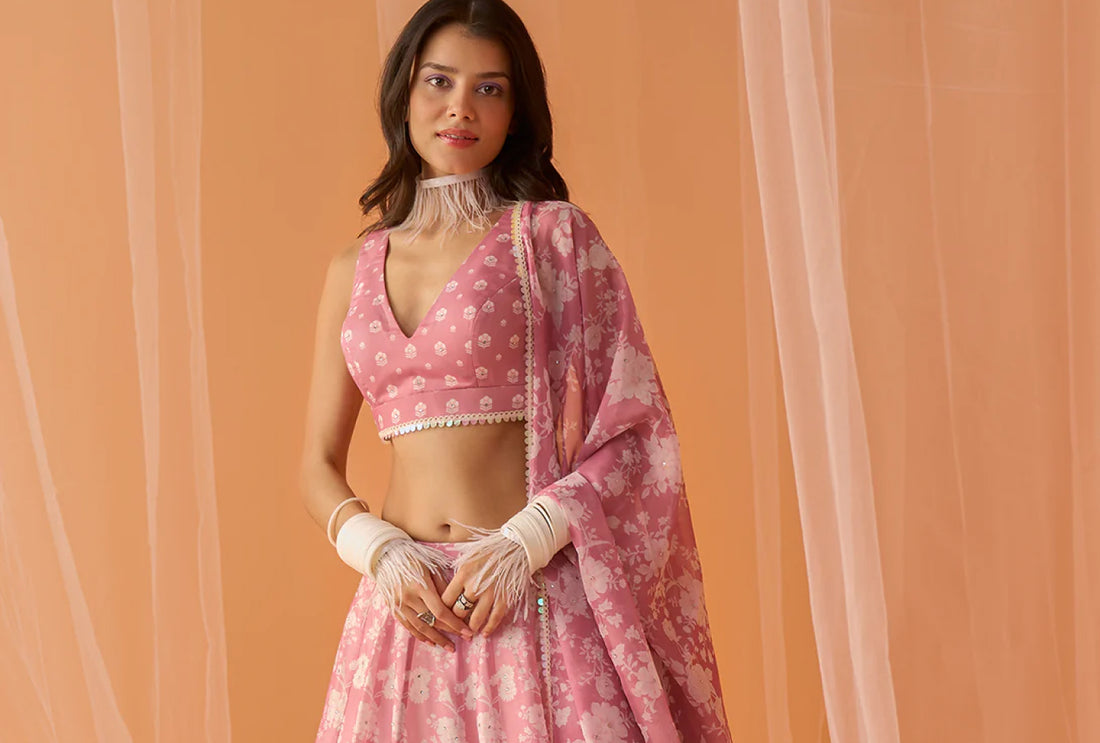Traditional Indian clothing has left an indelible mark on the world and global fashion. India is looked at for its excellence in finely handcrafted embroideries, many fabrics native to the country, colors and even silhouettes. Many celebrated and world-renowned fashion designers have borrowed styles from the traditional Indian women’s clothing like the saree style, kurta and pants, dupatta among others.
India’s rich textile heritage puts it on the world map, as we lend some of our culture to the west while also blending with the western taste to create contemporary garments. Traditional Indian clothing, whether it is men’s or women’s, is reflective of the ethnicity, cultural traditions, climate and geographical typography. That’s what makes Indian dresses so beautiful. Add to the mix intricate designs, embroidery, vibrant colors and a range of fabrics that are exclusively found in India.
Today, Indian ethnic wear has evolved and taken the shape of this amalgamation of Indian tradition and culture in western styles, silhouettes and designs.
Exploring the Different Styles of Indian Clothing and Its Meaning
India is a country of more than 1.5 billion people and has one of the most ancient cultures in the world. This huge country has many cultures, a varied geography, many states and different food cultures too. The traditional clothing of each region changes as the typography changes.
The north is the Punjabi dominated region while the south of India is dominated by the South Indian culture. Fashion obviously changes from north to south. The different types of Indian clothing are:
Saree
Saree or ‘strip of cloth’ in Sanskrit is more than a piece of clothing. It is the oldest form of drape and can be traced back to the Indus Valley Civilisation. This symbol of femininity, womanhood and grace is usually six to nine meters long. It comes in fabrics like Kanchipuram silk, Banarasi silk, indigo cotton, Bandhej and many other fabrics with various kinds of embroideries.
This versatile piece of clothing, initially usually worn by married women, is worn as a three piece – with a petticoat, blouse and of course the saree. Today, the saree has evolved into a pre-draped saree, cocktail saree, a contemporary saree that is more towards the western aesthetics and more variations. Not just the saree, but the blouse has also progressed from being a simple piece of fabric that covers the upper part of the body to stylish, statement making pieces of clothing. Think bareback, loose fitted shirt-like a boxy blouse, classic choli, ruffled sleeves, sleeveless blouse and other styles make for eye-catching blouses.
Salwar Kameez
Another popular piece of clothing, the salwar kameez is a two piece set of a long shirt and pants. This super comfortable style comes in many modifications like gharara, sharara, Patiala salwar, wide palazzo pants and churidar. Depending on the work of the ensemble, one can use them for both casual and special occasions.
Lashkaraa’s Dusty Mint and Pink Embroidered Sharara is a modest and sophisticated salwar kameez in embroidered georgette. Our Blush Pink Thread Embroidered Anarkali is another great outfit to wear for a puja or festivities. Another salwar kameez style is the Punjabi Suit like the White Floral Printed Peplum one.
Lehenga
Lehenga or ghagra is the traditional outfit which comprises of a floor length skirt, a blouse and a drape/dupatta. First seen and worn in the Indian states of Gujarat and Rajasthan, the lehenga is a comfortable Indian ethnic wear piece that can be worn on special occasions easily. Casual versions of the lehenga can be printed ones in light hues that make them perfect for day functions. Lashkaraa’s Dusty Pink White Floral Printed Lehenga is ideal for the upcoming summer weddings and festivities. For a sangeet night, go for heavily embroidered lehengas like our Bottle Green Embroidered Lehenga from the collection ‘Suroor’.
The Significance of Accessories in Indian Fashion
Any Indian traditional outfit is incomplete without jewelry. We’re not talking about a simple pair of studs. We’re talking necklaces made out of kundan that hang low, choker sets, big earrings, in addition to maang-tikka, nose-pin, haath phool, statement kadas and delicate bangles, cocktail rings and other accessories. The beauty of the ensemble is enhanced with these Indian accessories.
Celebrating the Spirit of India Through Colorful Attire
As the land of diverse cultures, it also calls for diversity in clothing and fashion. Every state, every culture, every festival is associated with color. Colors, especially bright ones, are a huge part of India. Despite these numerous festivals that are celebrated every year in India, each one holds a distinctive vibe, vigor and joy. Whether it is Holi – the festival of colors, Diwali – the festival of lights, Janmashtami – that celebrates the birth of Lord Krishna; bold and bright colors are the spirit of India.
Some of Lashkaraa’s color-rich and vibrant ensembles are from the collection ‘Hoor’, which celebrates the heritage of Punjab. It captures the zest and zeal of the culture, reflects the melody and energy of vibrant silhouettes that are equally elegant. Styles in this high-spirited range include lehenga with peplum style top, sharara and gharara styles, Punjabi style Patiala suit and anarkalis.
Unlike the west that majorly runs on the same three hues of white, black and neutrals, Indian clothing is a selection of different colors in every shade possible. The beauty of Indian ethnic wear is in its drapes, embroideries, colors and silhouettes. As the traditional Indian has become a global Indian today, the ensembles have also been given many contemporary twists to make them modern. English colors like mint, soft brown, cream and blacks have been seen as part of many ethnic wear collections. Further, quirky prints and patterns are also added to the mix. Indian designers are experimenting with fabrics, texture, silhouettes, styles and cuts and adding a more edgy touch to the traditional clothing.





